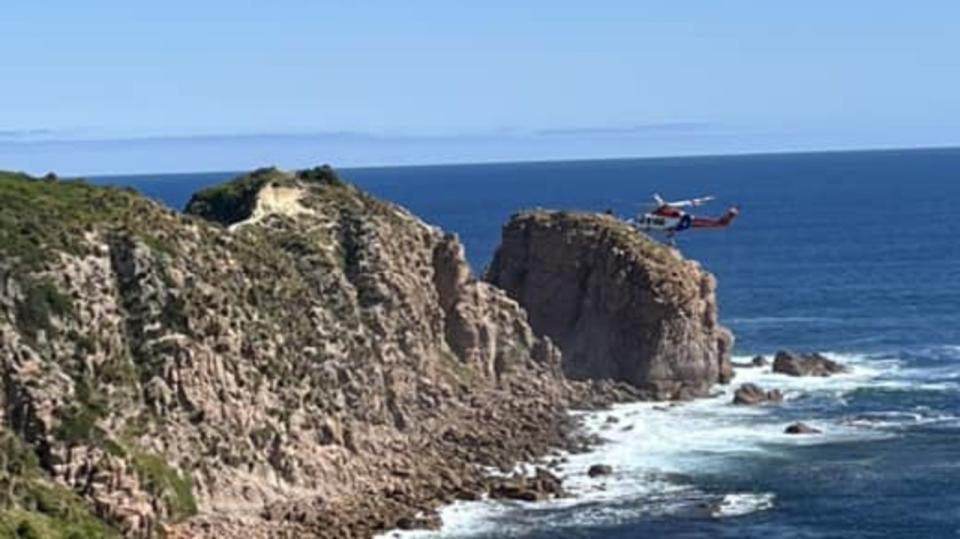‘New tourists’ spark chaos in Australia

Tourists are becoming more brazen in their attempt to take the perfect selfie, with authorities worried about an increasing risk across the country.
The warning comes after a 22-year-old woman fell 50m down a cliff face in Cape Woolamai on Phillip Island in Victoria on September 23.
She had reportedly veered off the walking trail to take a selfie at the popular tourist spot when she fell.

The woman was winched to safety by air ambulance and flown to the Alfred Hospital in Melbourne with non-fatal but serious injuries.
UNSW public health PhD candidate Samuel Cornell said he’d spoken to land managers across Australia – as part of his research into creating social media safety messaging to reduce injuries and fatalities – who tell him there’s a problem with visitors not understanding their own limitations.
Mr Cornell said there was a “new kind of visitor or tourist” emerging with different values when visiting places like national parks
“In the past (tourists) might have had more experience with bushwalking and the rugged scenery,” Mr Cornell said.
“Now we’ve got this new tourist who is just basically driven by social media, their visit is just for a photograph.
“It’s kind of changed the motives of the visitor … the fact these new tourists care much more about the photo and are willing to take risks to get the content they’ve gone for.”


Some of those risks include ignoring signage and climbing on unstable structures and cliff faces for a photo or taking selfies with a native animal like the quokka or a dingo.
A Queensland influencer recently faced immense backlash online after posting a photo of her interacting with a wild dingo on K’gari (Fraser Island) amid a year of attacks and increased warnings to leave the animals alone.
Gold Coast 21-year-old Zara Mander posted the image of her with an outstretched hand towards the dingo.
While there is no suggestion that any contact was made, the photo outraged members of the public.
The photo has since been deleted from her profile.

Mr Cornell said these types of photos on social media could influence others and act as a type of “copycat behaviour” that can be dangerous to not only the person taking the picture but also flora and fauna.
“They’ve seen that photo on Instagram and want to get the same photo,” he said.
“People are willing to trample native flora and … more so in Queensland where Indigenous rock art is messed around with.
“It’s kind of an issue crossing lots of disciplines in a way.
“It’s just a nationwide problem. Even taking photos with quokkas was really popular once but is now discouraged.
“It doesn’t seem to dissipating, there’s too much an incentive from social media to engage in the community.”
Mr Cornell said his research aimed to create ways to reduce the harm to those putting themselves at risk to take a photograph.
One such spot tourists tend to flout the rules and ignore safety advice for the perfect photo is the Sydney landmark Wedding Cake Rock.

Social media is littered with people posting photos of themselves on the impressive rock ledge despite the 1.6m fence erected in 2016 to keep people away from the fatal 40m drop.
The fence was erected after a 2015 geotechnical report found Wedding Cake Rock could collapse at any moment “without warning” into the ocean, the ABC reported.
There’s also a notice on the metal fence that states “No access onto Wedding Cake Rock – max penalty $3000”.
It also warns of the dangers of the “unstable” cliff edge.
The warning comes after French student Fabien Ardoin, 23, who was believed to have been posing for photographs, died at Wedding Cake Rock in 2014.
Police recovered his body after a gruelling search operation.
Meanwhile, two men were winched to safety after falling over the ledge the following year in 2015.
In Queensland, a woman was winched to safety after she fell 5m from a beachfront cliff onto rocks at a secluded hiking spot near Paradise Caves at Sunshine Beach, Noosa earlier this year.


Queensland Ambulance paramedics had to climb down to where she had landed after she slipped down the rock face as she was hiking near some caves along the shoreline.
Back in Victoria, a 24-year-old man died after falling down a cliff face at Cape Schanck on Mornington Peninsula in January this year.
The NSW man was climbing a cliff face just off the Two Bays walking track at Bushrangers Bay on January 27 when he fell.
Paramedics performed CPR but he died at the scene.
The latest rescue at Cape Woolamai on Phillip Island comes as a timely reminder for tourists to be wary of their safety.
Bass Coast Acting Police Inspector Dave Fyfe told ABC that tourists needed to be aware of sticking to walking trails to avoid potential accidents.
“So where there’s tracks, stick to tracks, especially those people who might be visiting this area,” Inspector Fyfe said.
“The fact is physics doesn’t come with a selfie clause and gravity is a one-way trip.”
Mr Cornell said he was working with land managers to develop safety messages for tourists to better understand the dangers they could face when pursuing the perfect selfie.
He said land managers were finding the messaging “quite difficult” to balance between safety warnings and encouraging visitors to the regions.
“These legacy strategies they have to communicate with people aren’t really working with these new tourists who are driven by social media,” Mr Cornell said.
“There’s these sorts of competing priorities – on the one hand they want to have visitors come to their parks, which in essence is what they’re for, and tourism is promoted, but on the flip side they are managing that tourism against this safety element of visitation.”


